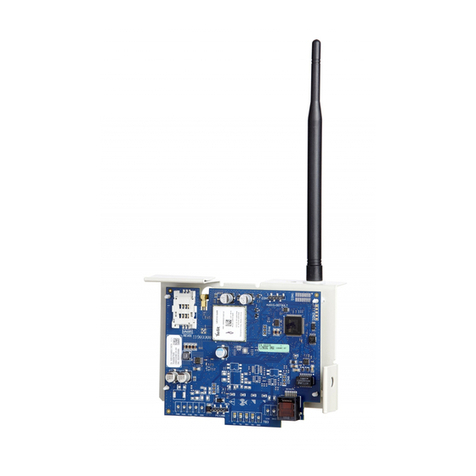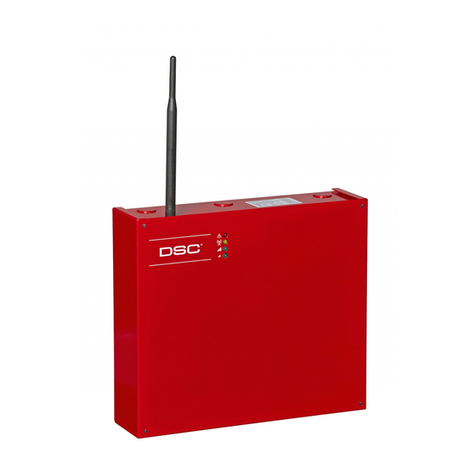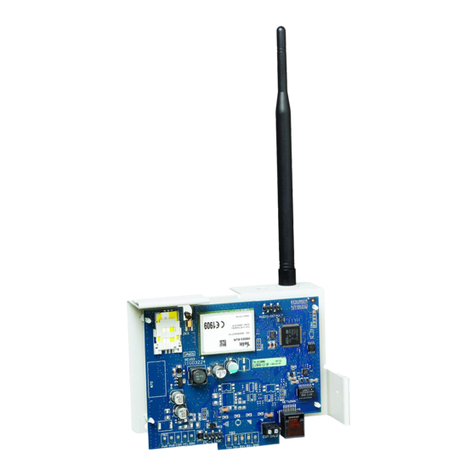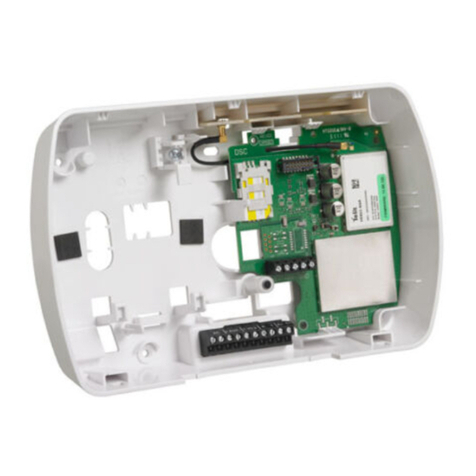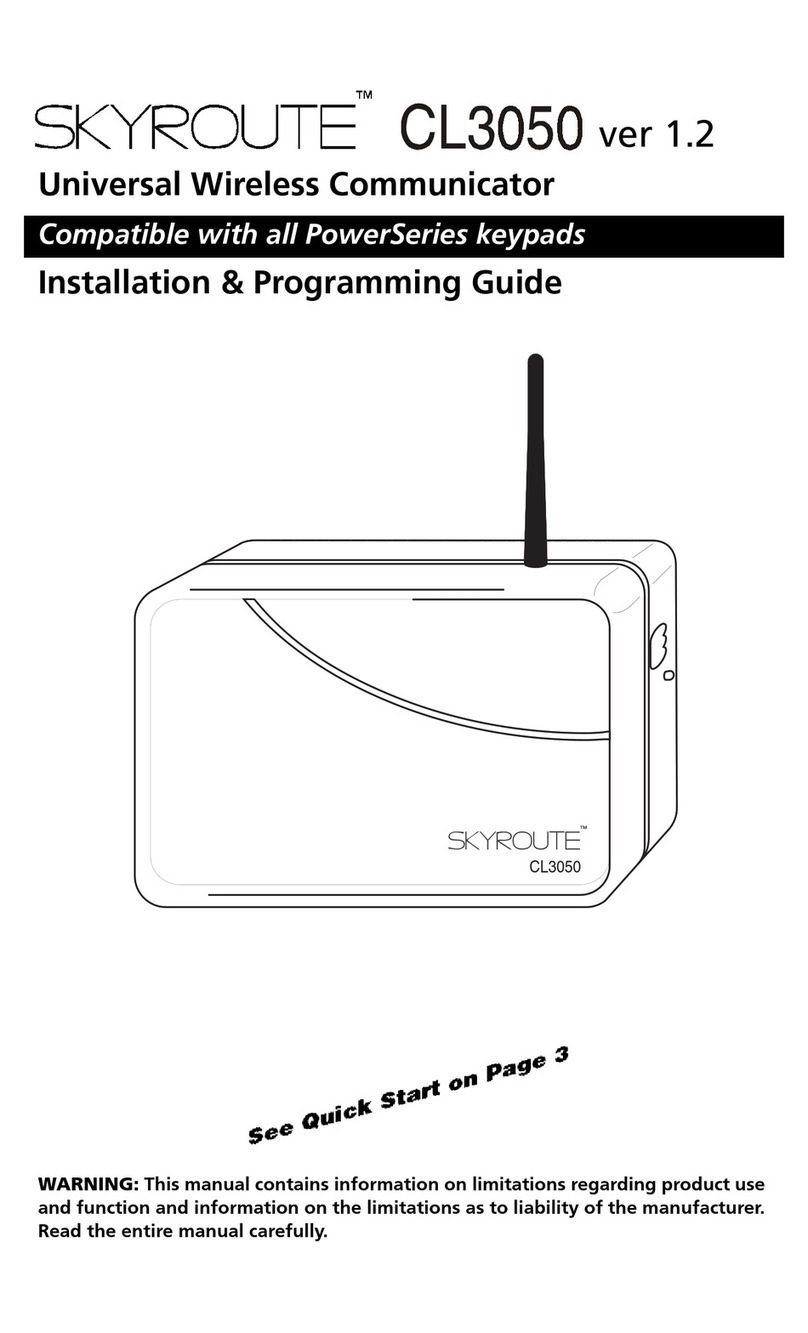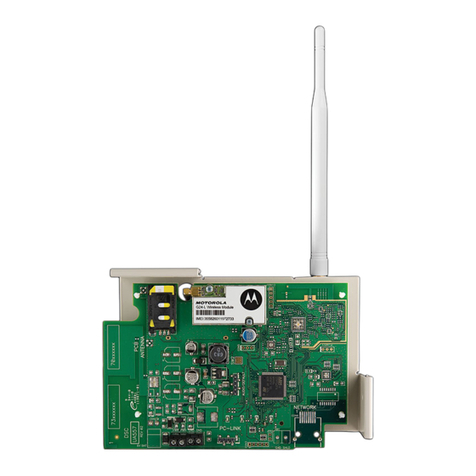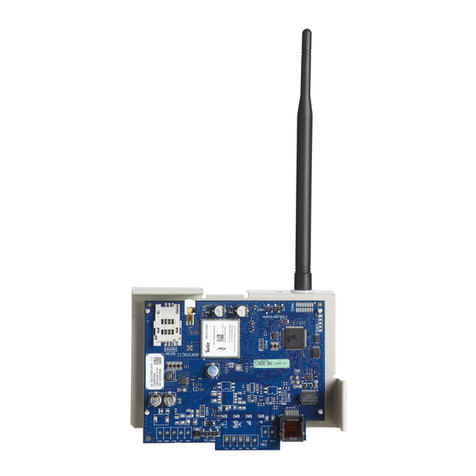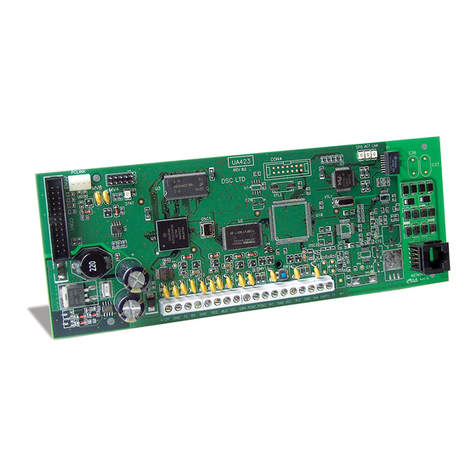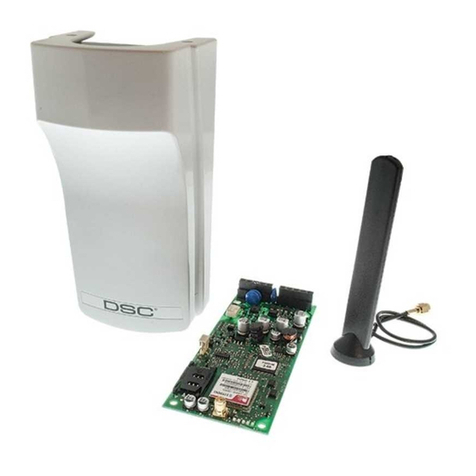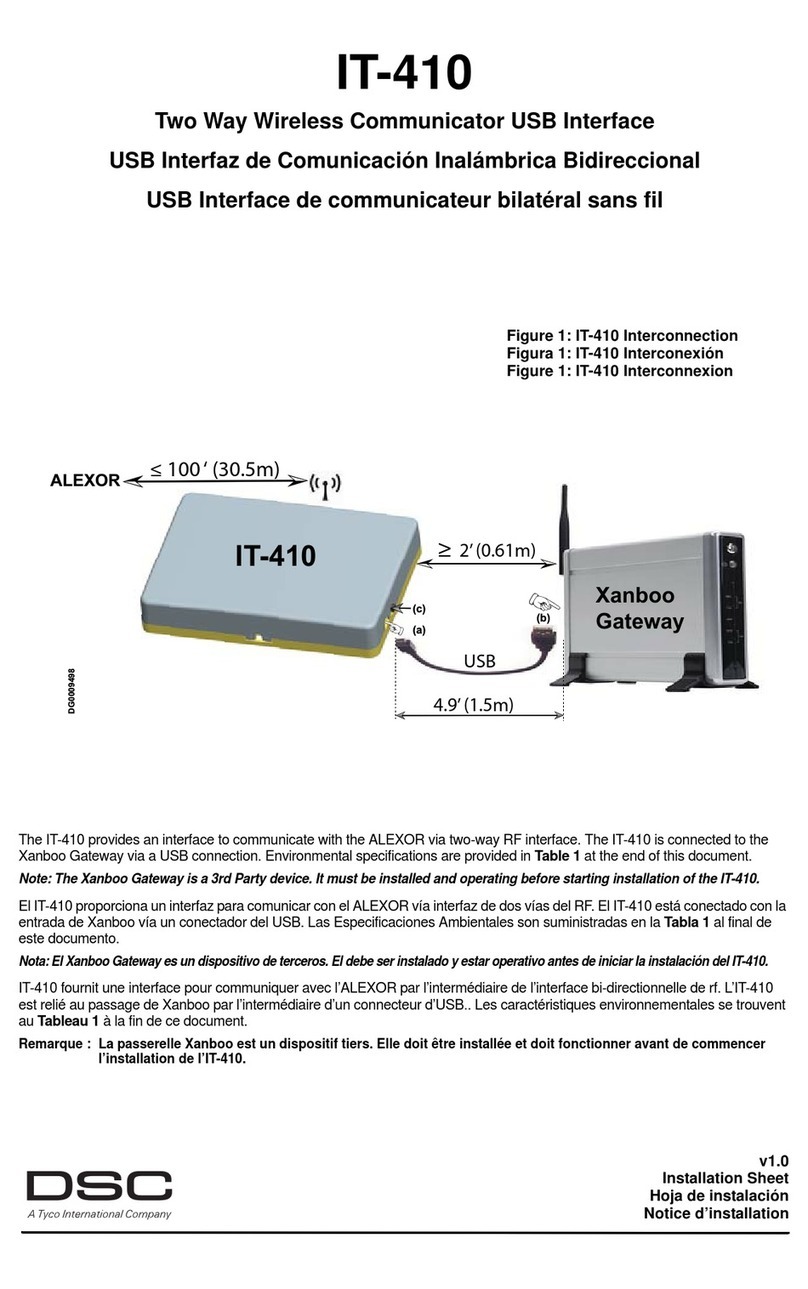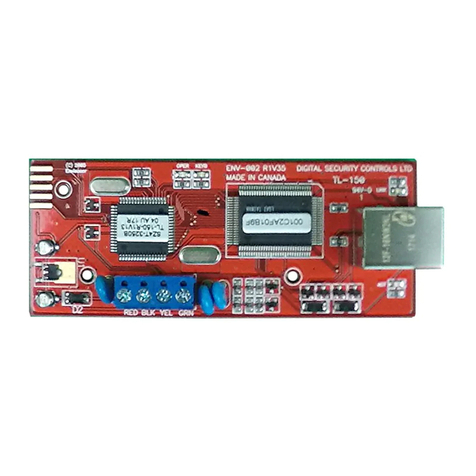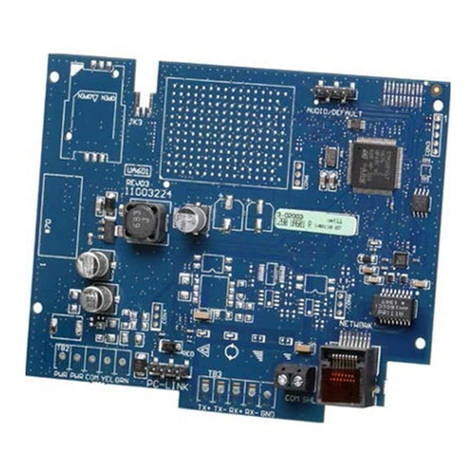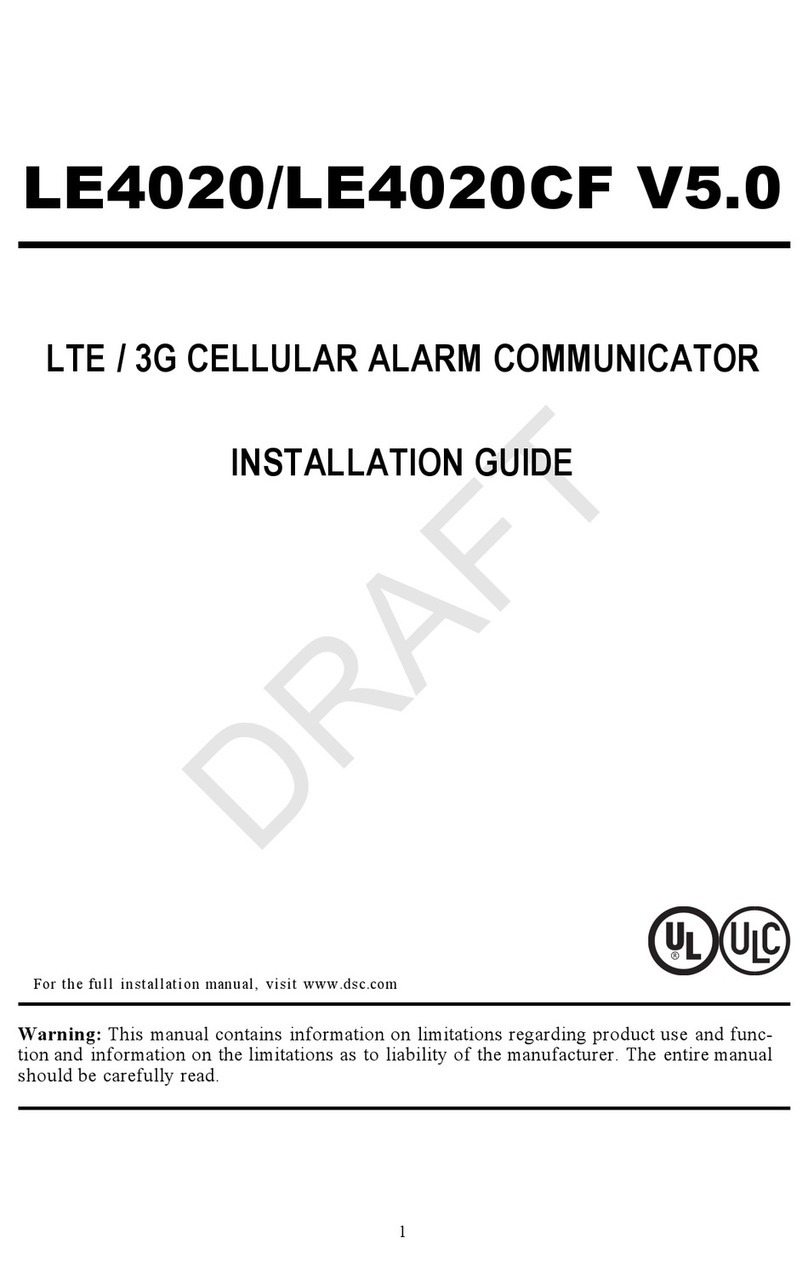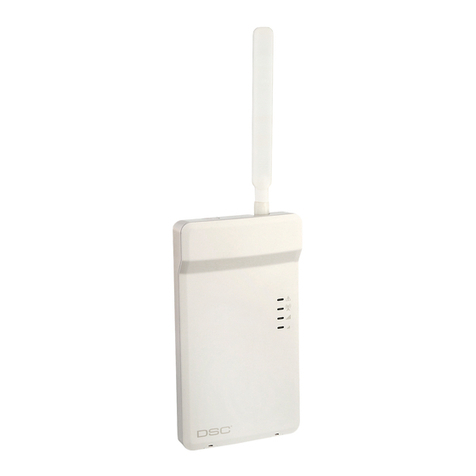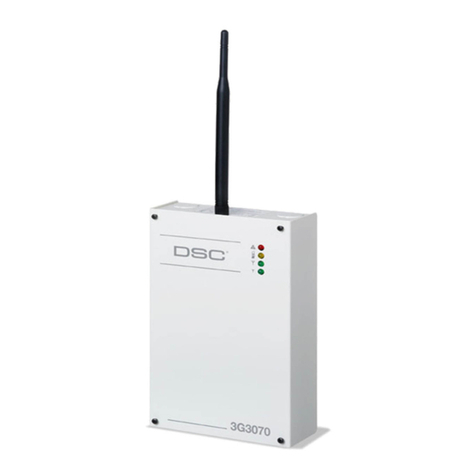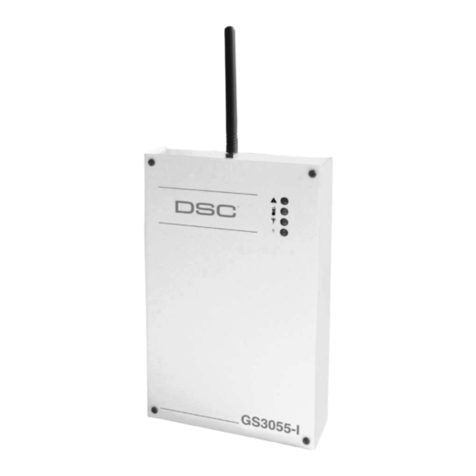
WARNING: Installer please read
carefully
Note to Installers
The warningson thispage contain vitalinformation. Asthe only individualin con-
tact with system users, it is the installer’s responsibility to bring each item in this
warning to the attention of allusersof thissystem.
System Failures
Thissystemhasbeen carefullydesigned to be as effective aspossible. There are
circumstances, however, involving fire, burglary, or other types of emergencies
where it may not provide protection. Any alarmsystem of anytype may be com-
promised deliberatelyor mayfailto operate as expected fora varietyof reasons.
Some, but not all, of the reasonsmaybe:
Access by Intruders
Intrudersmay enter through an unprotected accesspoint, circumvent a sensing
device, evade detection by moving through an area of insufficient coverage, dis-
connect a warning device, or interfere with or prevent the proper operation of the
system.
Component Failure
Although everyeffort has been made to make thissystem as reliable as possible,
the systemmay failto function asintended due to the failure of a component.
Compromise of Radio Frequency (Wireless) Devices
Signalsmay not reach the receiver under all circumstances which could include
metalobjectsplaced on ornear the radio path or deliberate jamming orotherinad-
vertent radio signal interference.
Criminal Knowledge
Thissystem contains security features which were known to be effective at the
time of manufacture. It is possible for personswith criminalintent to develop tech-
niques which reduce the effectivenessof these features. It is important that the
securitysystembe reviewed periodicallyto ensure that its featuresremain effect-
ive and that it isupdated or replaced if it isfound that it does not provide the pro-
tection expected.
Failure of Replaceable Batteries
Thissystem’s wirelesstransmitters have been designed to provide several years
of battery life under normal conditions. The expected battery life isa function of
the device environment, usage, and type. Ambient conditions such ashigh humid-
ity,high or low temperatures, or large temperature fluctuations may reduce the
expected battery life. While each transmitting device has a low battery monitor
which identifies when the batteries need to be replaced, this monitormay fail to
operate as expected. Regulartesting and maintenance willkeep the system in
good operating condition.
Inadequate Installation
A security system must be installed properly in order to provide adequate pro-
tection. Every installation should be evaluated by a security professional to
ensure that allaccess points and areas are covered. Locks and latches on win-
dows and doors must be secure and operate as intended. Windows, doors,
walls, ceilings and other building materialsmust be of sufficient strength and con-
struction to provide the levelof protection expected. Areevaluation must be done
during and afterany construction activity. An evaluation bythe fire and/or police
department ishighlyrecommended if this service isavailable.
Inadequate Testing
Most problems that would prevent an alarm systemfrom operating as intended
can be found by regular testing and maintenance. The complete system should
be tested weeklyand immediatelyafter a break-in, an attempted break-in, a fire,
a storm, an earthquake, an accident, or any kind of construction activity inside or
outside the premises. The testing should include all sensing devices, keypads,
consoles, alarm indicating devices, and any other operational devices that are
part of the system.
Insufficient Time
There may be circumstanceswhen the systemwill operate asintended, yet the
occupants will not be protected from an emergency due to their inability to
respond to the warnings in a timelymanner. If the systemis remotely monitored,
the response maynot occurin time to protect the occupants ortheir belongings.
Motion Detectors
Motion detectorscan only detect motion within the designated areasasshown in
their respective installation instructions. They cannot discriminate between
intruders and intended occupants. Motion detectors do not provide volumetric
area protection. Theyhave multiple beams of detection and motion can only be
detected in unobstructed areas covered by these beams. They cannot detect
motion which occurs behind walls, ceilings, floor, closed doors, glass partitions,
glass doors or windows. Any type of tampering whether intentional or unin-
tentionalsuch as masking, painting, or spraying of anymaterialon the lenses, mir-
rors, windows or any other part of the detection system will impair its proper
operation.
Passive infrared motion detectors operate by sensing changes in temperature.
However their effectiveness can be reduced when the ambient temperature
risesnear orabove bodytemperature orif thereare intentionalor unintentional
sources of heat in or near the detection area. Some of these heat sources could
be heaters, radiators, stoves, barbecues, fireplaces, sunlight, steamvents, light-
ing and so on.
Power Failure
Control units, intrusion detectors, smoke detectors and many other security
devicesrequire an adequate powersupplyforproperoperation. Ifa device oper-
ates frombatteries, it is possible for the batteriesto fail. Even if the batteries have
not failed, they must be charged, in good condition and installed correctly. If a
device operates only by AC power, any interruption, however brief, will render
that device inoperative while it does not have power. Power interruptions of any
length are often accompanied by voltage fluctuations which may damage elec-
tronic equipment such as a security system. After a power interruption has
occurred, immediatelyconduct a complete systemtest to ensure that the system
operatesasintended.
Security and Insurance
Regardlessof itscapabilities, an alarmsystemisnot a substitute for property or life
insurance. An alarmsystemalso isnot a substitute for property owners, renters, or
other occupants to act prudentlyto prevent or minimize the harmful effectsof an
emergencysituation.
Smoke Detectors
Smoke detectorsthat are a part of thissystemmay not properlyalert occupants of
a fire for a number of reasons, some of which follow. The smoke detectors may
have been improperlyinstalled or positioned. Smoke may not be able to reach the
smoke detectors, such as when the fire is in a chimney, walls orroofs, or on the
other side of closed doors. Smoke detectorsmay not detect smoke from fires on
anotherlevelof the residence or building.
Everyfire isdifferent in the amount of smoke produced and the rate of burning.
Smoke detectorscannot sense alltypes of fires equallywell. Smoke detectors may
not provide timelywarning of fires caused bycarelessnessorsafetyhazards such
as smoking in bed, violent explosions, escaping gas, improper storage of flam-
mable materials, overloaded electrical circuits, children playing with matches, or
arson.
Even if the smoke detector operates as intended, there may be circumstances
when there isinsufficient warning to allow alloccupantsto escape in time to avoid
injuryor death.
Telephone Lines
If telephone lines are used to transmit alarms, they may be out of service or busy
for certain periodsof time. Also an intruder may cut the telephone line ordefeat its
operation by more sophisticated meanswhich maybe difficult to detect.
Warning Devices
Warning devices such as sirens, bells, horns, or strobes may not warn people or
waken someone sleeping ifthere isan intervening wallordoor. If warning devices
are located on a different levelof the residence or premise, then it islesslikely that
the occupants will be alerted or awakened. Audible warning devices may be
interfered with by other noise sourcessuch asstereos, radios, televisions,air con-
ditioners, other appliances, or passing traffic. Audible warning devices, however
loud, maynot be heard bya hearing-impaired person.
2

